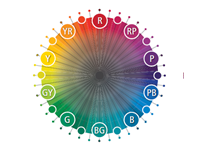Cotton is a renewable and biodegradable material sourced from cotton plants. However, conventional cotton farming uses around 16% of the world’s insecticides and 6% of pesticides annually, posing serious environmental risks. These chemicals get contaminated with groundwater and contribute to serious ecological hazards by releasing nitrous oxide. Moreover, they lead to soil degradation, harming farmers’ yields and driving them into poverty along with several health issues for farmers and others. Cotton is also a water-intensive crop, needing around 2,700 liters of water to make one t-shirt, which is roughly the amount an average person consumes in 900 days. With consumers shifting their attention towards sustainability, the demand for responsibly produced cotton surges. However, with multiple sustainability labels flooding the market, it can be a challenge to identify the most eco-friendly options. Among them, two prominent options- BCI Cotton (Better Cotton Initiative) and Organic Cotton offer different sustainability strategies.
BCI Cotton is an important step toward greener practices, it’s essential to note that it’s not entirely organic. This global program aimed at transforming cotton farming practices by emphasizing the reduction of water consumption, minimizing pesticide use, and ensuring fair labor conditions for the farmers. The initiative allows the use of pesticides and genetically modified (GM) seeds, provided they meet specific sustainable criteria.
Learn more about BCI Cotton.
In contrast, organic cotton is grown under strict farming standards that do not allow using synthetic chemicals and GM seeds. Certified by several organizations like GOTS, and USDA, organic cotton promotes soil health, biodiversity, and long-term sustainability practices. You can learn more about Organic cotton.
To determine which allows more sustainable options, let’s analyze their environmental, social, and economic impacts.
| Aspects | BCI Cotton | Organic Cotton |
| Water efficiency | Promotes efficient irrigation but allows conventional methods. | Require less water due to soil moisture retention. |
| Chemical usages | Allows responsible use of pesticides and fertilizers | Cultivated without harmful chemicals like synthetic pesticides and fertilizers |
| Ecological Diversity | Allows GM crops with minimal biodiversity impact | Enables biodiversity through natural farming methods |
| Cost | Lower cost, making it accessible to more farmers | Higher costs due to strict organic standards. |
| Ethical practices | Enable better practices, encourage fair labor, and work on scalability. | Provide higher premiums and stricter fair-trade regulations. |
| Market Demand | More accessible and cost-effective widely adopted by major brands | Premium sustainable fashion due to certification costs and lower yields |
References:
- https://medium.com/@tanaybhatt490/bci-cotton-vs-organic-cotton-making-informed-choices-for-sustainable-fashion-121dac73b26f
- https://apparelscience.com/difference-between-conventional-cotton-organic-cotton-and-bci-cotton/
- https://recoverfiber.com/newsroom/guide-to-different-types-of-cotton
- https://www.youtube.com/watch?v=XHNuIqrqNKM




